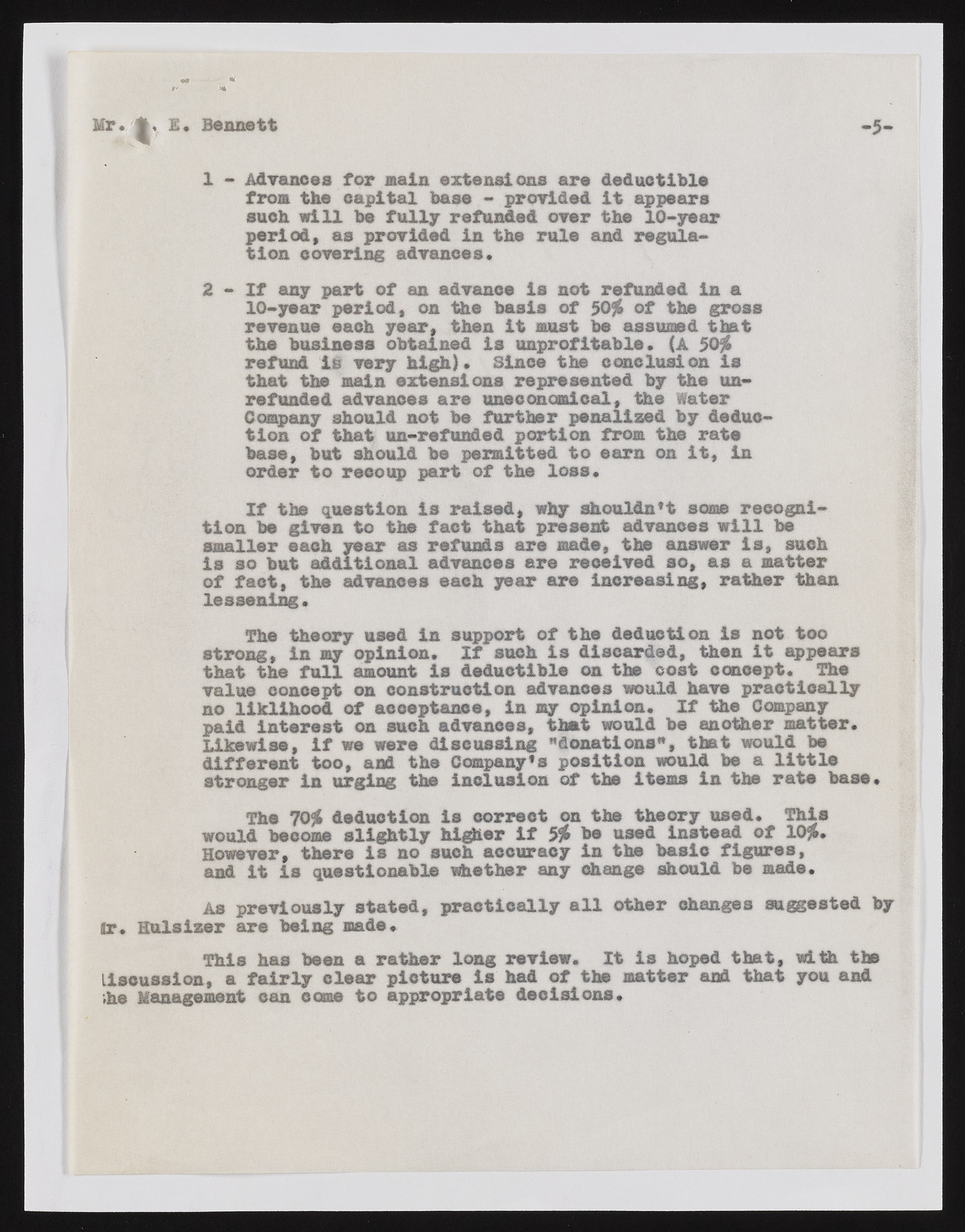Copyright & Fair-use Agreement
UNLV Special Collections provides copies of materials to facilitate private study, scholarship, or research. Material not in the public domain may be used according to fair use of copyrighted materials as defined by copyright law. Please cite us.
Please note that UNLV may not own the copyright to these materials and cannot provide permission to publish or distribute materials when UNLV is not the copyright holder. The user is solely responsible for determining the copyright status of materials and obtaining permission to use material from the copyright holder and for determining whether any permissions relating to any other rights are necessary for the intended use, and for obtaining all required permissions beyond that allowed by fair use.
Read more about our reproduction and use policy.
I agree.Information
Digital ID
Permalink
Details
More Info
Rights
Digital Provenance
Publisher
Transcription
Mr Bennett -5 1 - Advancea for main extensions are deductible from the capital base - provided it appears such will be fully refunded over the 10-year period, as provided in the rule and regulation covering advances. 2 - If any part of an advance Is not refunded in a 10-year period, on the basis of 50% of the gross revenue each year, then it must be assumed that the business obtained is unprofitable. (A 50% refund is very high). Since the conclusion is that the main extensions represented by the un-ref ended advances are uneconomical, the Water Company should not be further penalized by deduction of that an-refunded portion from the rate base, but should be permitted to earn on it, in order to recoup part of the loss. If the question is raised, why shouldn't sesame recognition be given to the fact that present advances will be smaller each year as refunds are made, the answer is, such is so but additional advances are received so, as a matter of fact, the advances each year are increasing, rather than lessening. The theory used in support of the deduction is not too strong, in my opinion. If such is discarded, then it appears that the full amount is deductible on the cost concept. The value concept on construction advances would have practically no liklihood of acceptance, in my opinion. If the Company paid interest on such advances, that would be another matter. Likewise, if we were discussing "donations", that would be different too, and the Company's position would be a little stronger in urging the inclusion of the items in the rate base. The 70% deduction is correct on the theory used. This would become slightly higier if 5% be used instead of 10%. However, there is no such accuracy in the basic figures, and it is questionable whether any change should be made. As previously stated, practically all other changes suggested by gr. Hulsizer are being made. This has been a rather long review. It is hoped that, with the Liscuasion, a fairly clear picture is had of the matter and that you and ,he Management can come to appropriate decisions.

